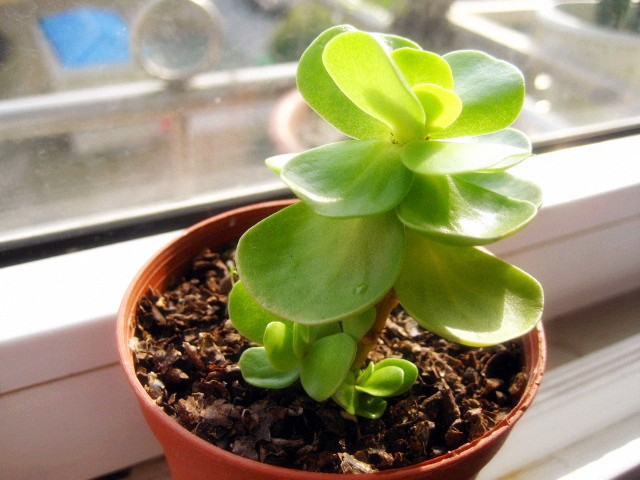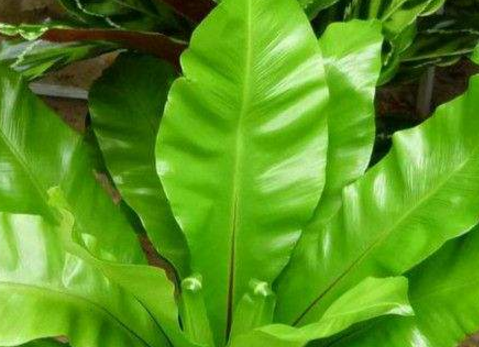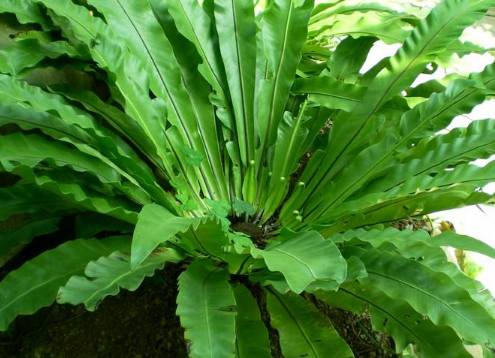The cause of yellowing and softening of leaves
Sunlight exposure
In the hot summer, direct sunlight, the lack of soil moisture, direct sunlight causes the tender leaves to be burned, and then the phenomenon of yellowing and softening occurs.
Prevention and control measures:
Do not let the money wood suddenly accept the sun exposure, can give appropriate light. In summer, you can put it indoors or in a cool place for breeding!

Diseases and pests
When the tree is in an environment of high temperature or poor ventilation, it is extremely prone to diseases and pests, and is vulnerable to the piercing harm of shell insects, and its leaves will appear yellow-brown round disease spots, resulting in the phenomenon of yellowing and softening.
Prevention and control methods:
When diseased leaves are found, the diseased leaves should be removed in time to prevent the transmission between diseased leaves. Pesticides can be sprayed appropriately to dispel diseases, transparent tape can also be used to remove worms, and wet cloth can also be used to wipe off live worms.
The temperature is too low
Generally in winter, the temperature is below 5 degrees, and the basin soil is moist, which can easily lead to the yellowing and softening of the leaves, and it is also difficult to restore vitality.
Prevention and control methods:
During the overwintering period, it is necessary to ensure that the cultivation temperature is not lower than 10 degrees and keep the basin soil dry.
Raise a pot of money wood, make its leaves fresh, unique shape, with a high ornamental value! So apart from the ornamental value, what is the value of it?
Phalaenopsis leaves yellowing and softening what causes it, and how to deal with it
Phalaenopsis blossoms in bright color, elegant shape, very good-looking. The green leaves are also full of vitality, but the leaves of Phalaenopsis often turn yellow and soft and wilt. Here are the reasons for the yellowing of Phalaenopsis leaves.
Analysis / treatment of yellowing of Phalaenopsis leaves
Phalaenopsis leaves yellowing: temperature
Phalaenopsis requires high temperature. The best temperature for its growth is 18-28 ℃. It is not resistant to high temperature and cold. Higher than 32 ℃ and less than 15 ℃ will affect the growth of Phalaenopsis. Therefore, more attention should be paid in summer and winter to ensure that it grows in a suitable environment.
Phalaenopsis leaves yellowing: water and fertilizer
Phalaenopsis is native to the tropics, so it likes the environment with high humidity, but too much watering is easy to rot the roots. When the leaves of Phalaenopsis turn yellow and soft, you can choose to put the whole basin of Phalaenopsis into a large container filled with water, and the water surface is in 2 parts of the Phalaenopsis pot. Just feel the soil moist with your hands. In addition, attention should be paid to fertilization during the growing period. Phalaenopsis generally needs more potash fertilizer.
Phalaenopsis leaves yellowing: light
Phalaenopsis likes semi-shaded environment and likes to scatter light. Strong light or long-term exposure to dark environment will affect the photosynthesis of Phalaenopsis, making the leaves yellow and soft. Therefore, we should pay attention to avoid strong light exposure while ensuring sufficient light. Don't shoot directly from May to October, you can put it on a warm balcony in winter.
Phalaenopsis leaves yellowing: diseases and insect pests
Pests such as red spiders and shell insects can also cause the leaves of Phalaenopsis to turn yellow and soft. At ordinary times, we should ensure the circulation of air, clean up the dead branches and rotten leaves in time, and observe the surrounding environment of plants to ensure the cleanliness of growth. When there are few pests in the initial stage, you can use a soft brush to wipe off the foliar bugs, or you can spray insecticides to get rid of them.
The leaves of Phalaenopsis turn yellow and soft.
Phalaenopsis leaves yellowing and softening-- temperature
Phalaenopsis requires high temperature. The best temperature for its growth is 18-28 ℃. It is not resistant to high temperature and cold. Higher than 32 ℃ and less than 15 ℃ will affect the growth of Phalaenopsis. Therefore, more attention should be paid in summer and winter to ensure that it grows in a suitable environment.
Phalaenopsis leaves yellowing and softening-- water and fertilizer
Phalaenopsis is native to the tropics, so it likes the environment with high humidity, but too much watering is easy to rot the roots.
When the leaves of Phalaenopsis turn yellow and soft, you can choose to put the whole basin of Phalaenopsis into a large container filled with water, and the water surface is in 2 parts of the Phalaenopsis pot. Just feel the soil moist with your hands.
In addition, attention should be paid to fertilization during the growing period. Phalaenopsis generally needs more potash fertilizer.
Phalaenopsis leaves yellowing and softening-- light
Phalaenopsis likes semi-shaded environment and likes to scatter light. Strong light or long-term exposure to dark environment will affect the photosynthesis of Phalaenopsis, making the leaves yellow and soft.
Therefore, we should pay attention to avoid strong light exposure while ensuring sufficient light. Don't shoot directly from May to October, you can put it on a warm balcony in winter.
Phalaenopsis leaves yellowing and softening-- Diseases and insect pests
Pests such as red spiders and shell insects can also cause the leaves of Phalaenopsis to turn yellow and soft. At ordinary times, we should ensure the circulation of air, clean up the dead branches and rotten leaves in time, and observe the surrounding environment of plants to ensure the cleanliness of growth. When there are few pests in the initial stage, you can use a soft brush to wipe off the foliar bugs, or you can spray insecticides to get rid of them.
- Prev

Breeding method of nest fern
When spore propagation comes in spring, disinfect the prepared sowing soil, put it into a pot, then evenly sprinkle mature spores on the pot soil, then immerse the whole pot in water, let the pot soil fully wet, cover the glass pot to keep moisture, and finally put it in a cool place. After about one week, new buds can sprout.
- Next

The culture method of bird's nest fern
1. The suitable temperature for the growth of bird's nest fern is 22-27 ℃, which is not resistant to high temperature or cold, and can not be lower than 5 ℃ in winter. Too low temperature can easily cause the leaf margin to turn brown, and even cause plant death by frostbite. two。 The bird's nest fern is a negative herb and has little demand for light.
Related
- Fuxing push coffee new agricultural production and marketing class: lack of small-scale processing plants
- Jujube rice field leisure farm deep ploughing Yilan for five years to create a space for organic food and play
- Nongyu Farm-A trial of organic papaya for brave women with advanced technology
- Four points for attention in the prevention and control of diseases and insect pests of edible fungi
- How to add nutrient solution to Edible Fungi
- Is there any good way to control edible fungus mites?
- Open Inoculation Technology of Edible Fungi
- Is there any clever way to use fertilizer for edible fungus in winter?
- What agents are used to kill the pathogens of edible fungi in the mushroom shed?
- Rapid drying of Edible Fungi

